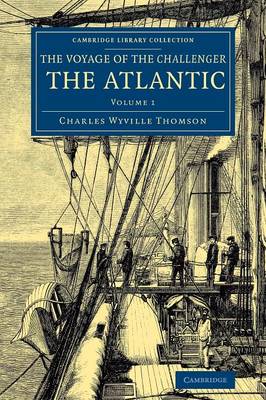Cambridge Library Collection - Polar Exploration
1 primary work • 3 total works
Volume 1
In 1871 the British government agreed to support an expedition to collect physical and chemical data and biological specimens from the world's oceans. Led by Charles Wyville Thomson (1830–82), the expedition used HMS Challenger, refitted with laboratories. They sailed nearly 70,000 nautical miles around the world, took soundings and water samples at hundreds of stops along the way, and discovered more than 4,000 new marine species. Noted for the discovery of the Mid-Atlantic Ridge and the Pacific's deepest trench, the expedition laid the foundations for modern oceanography. This acclaimed two-volume account, first published in 1877, summarises the major discoveries for the Atlantic legs of this pioneering voyage. Illustrated with plates and woodcuts, Volume 1 describes the laboratories and equipment, the observations from Portsmouth via Tenerife to the Caribbean, and the detailed studies on the Gulf Stream.
Voyage of the Challenger: The Atlantic: Volume 1
by Charles Wyville Thomson
Published 5 December 2014
In 1871 the British government agreed to support an expedition to collect physical and chemical data and biological specimens from the world's oceans. Led by Charles Wyville Thomson (1830–82), the expedition used HMS Challenger, refitted with laboratories. They sailed nearly 70,000 nautical miles around the world, took soundings and water samples at hundreds of stops along the way, and discovered more than 4,000 new marine species. Noted for the discovery of the Mid-Atlantic Ridge and the Pacific's deepest trench, the expedition laid the foundations for modern oceanography. This acclaimed two-volume account, first published in 1877, summarises the major discoveries for the Atlantic legs of this pioneering voyage. Illustrated with plates and woodcuts, Volume 1 describes the laboratories and equipment, the observations from Portsmouth via Tenerife to the Caribbean, and the detailed studies on the Gulf Stream.
Voyage of the Challenger: The Atlantic: Volume 2
by Charles Wyville Thomson
Published 18 December 2014
In 1871 the British government agreed to support an expedition to collect physical and chemical data and biological specimens from the world's oceans. Led by Charles Wyville Thomson (1830–82), the expedition used HMS Challenger, refitted with laboratories. They sailed nearly 70,000 nautical miles around the world, took soundings and water samples at hundreds of stops along the way, and discovered more than 4,000 new marine species. Noted for the discovery of the Mid-Atlantic Ridge and the Pacific's deepest trench, the expedition laid the foundations for modern oceanography. This acclaimed two-volume account, first published in 1877, summarises the major discoveries for the Atlantic legs of this pioneering voyage. Illustrated with plates and woodcuts, Volume 2 describes the voyage from the Caribbean via Madeira to the coast of Brazil, then to South Africa. The voyage home in 1876 from the Strait of Magellan is also covered. A final chapter summarises the principal conclusions.

